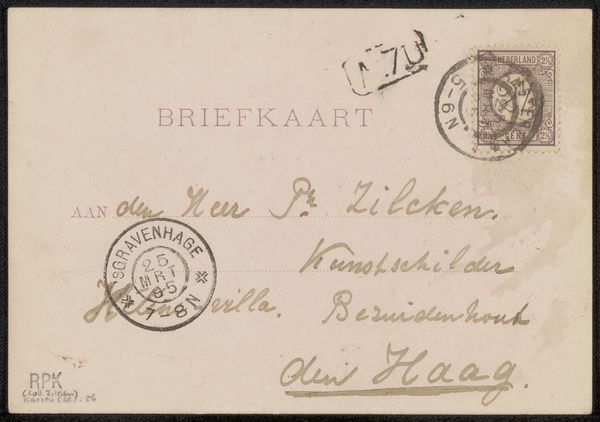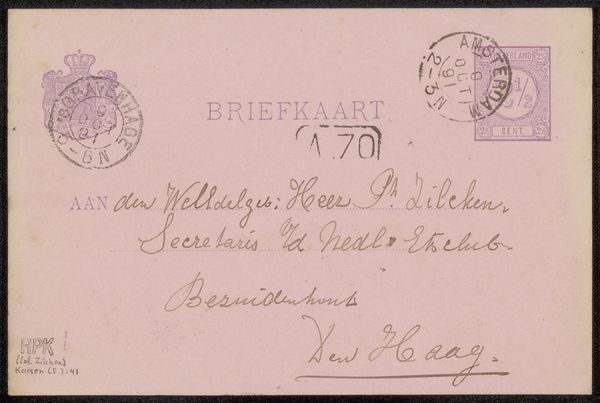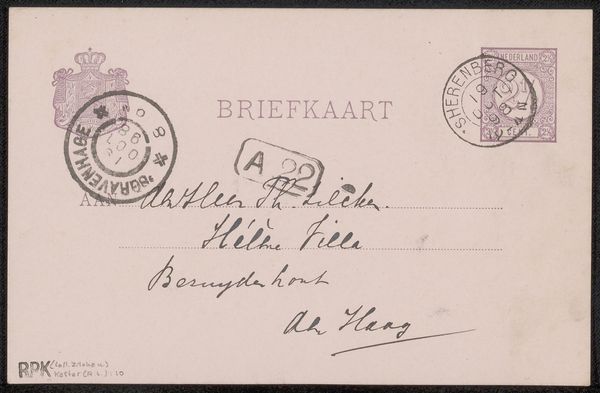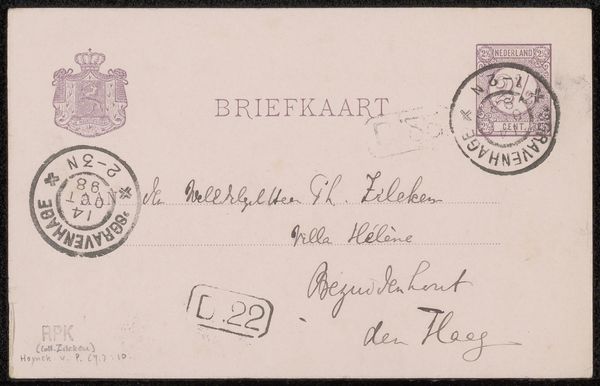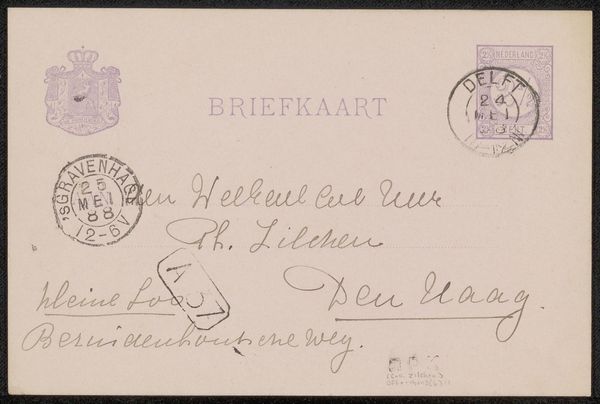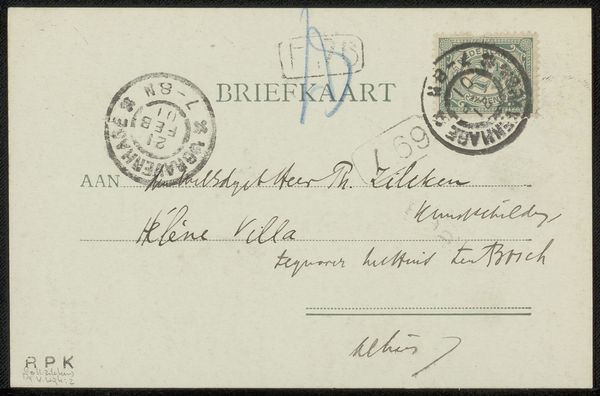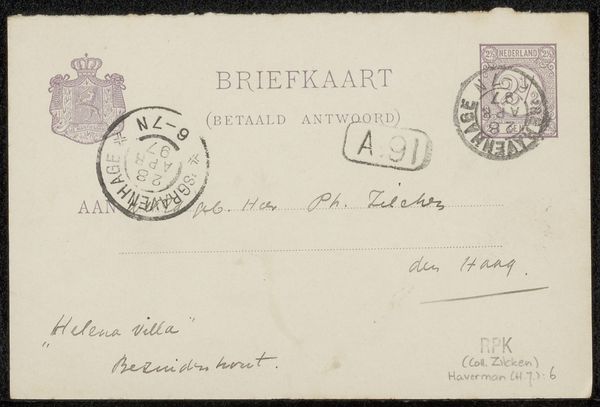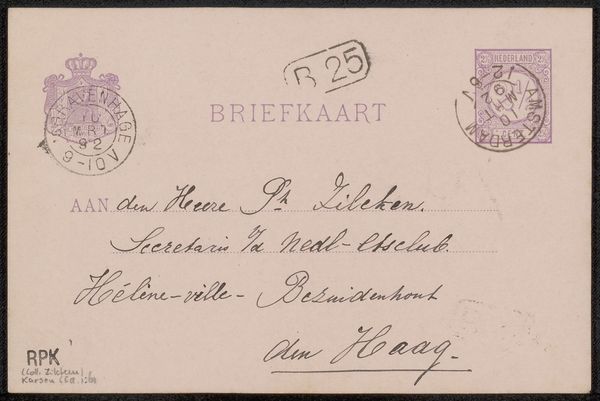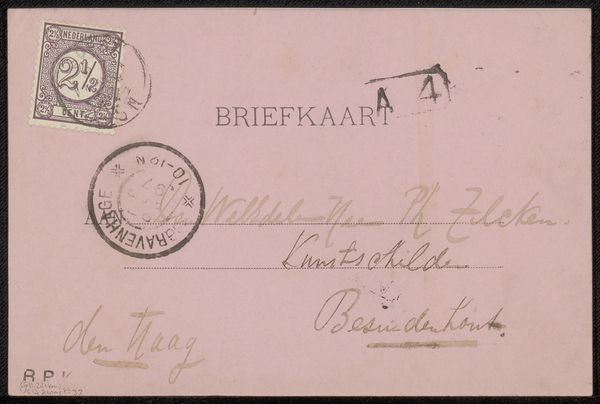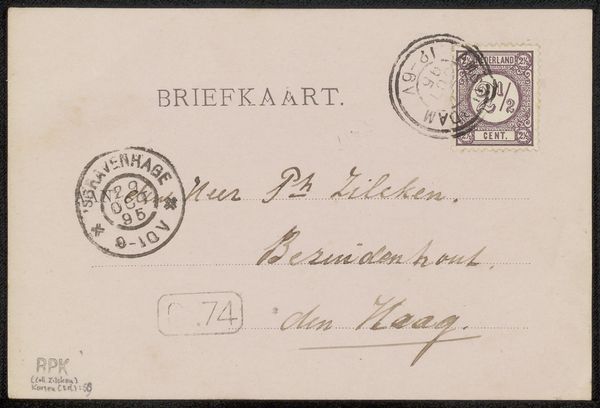
paper, photography, ink
#
paper
#
photography
#
ink
#
calligraphy
Copyright: Rijks Museum: Open Domain
Editor: We're looking at a postcard to Philip Zilcken, probably from somewhere in the 1890s, crafted from paper using photography and ink, featuring calligraphy. It's intriguing how this everyday item, a simple message, is now displayed as art. How do you interpret this work within its historical context? Curator: Well, first, consider what a 'postcard' signified then compared to now. Today, it’s often a touristy afterthought. Back then, though, it was a primary means of visual communication, connecting people across distances with both image and text. I’m curious, what can we gather from the visual elements alongside the handwritten address? Editor: I notice the postmarks, almost like graphic elements competing with the address itself. They give a strong sense of place and time. Curator: Precisely! Notice the stamps indicating different locations, The Hague and Delft. This piece prompts us to think about networks of communication in the late 19th century. Who was Zilcken? What was his role in those networks? Was he a cultural figure, an artist, a merchant? Also, let’s look at the handwriting. Can you see anything beyond the address in the style? Editor: It feels quite formal, almost ceremonial, befitting of a period of great social stratification. This ordinary mail is an instrument to keep the structure? Curator: Absolutely. Calligraphy itself was an indicator of education and social standing, a visual signifier of class. It’s important to remember that access to communication channels and literacy wasn't universal. Who was excluded from this conversation, both literally in terms of readership and more broadly in terms of representation? Editor: That makes me see this "Briefkaart" less as a quaint relic and more as a charged object, representative of broader social and political power dynamics. Curator: Indeed. Analyzing seemingly simple items like this postcard offers rich insight into the complex tapestry of identity, class, and communication in a specific historical moment. I find the ordinary lives are important to inspect for deeper understanding of social structures and power.
Comments
No comments
Be the first to comment and join the conversation on the ultimate creative platform.
